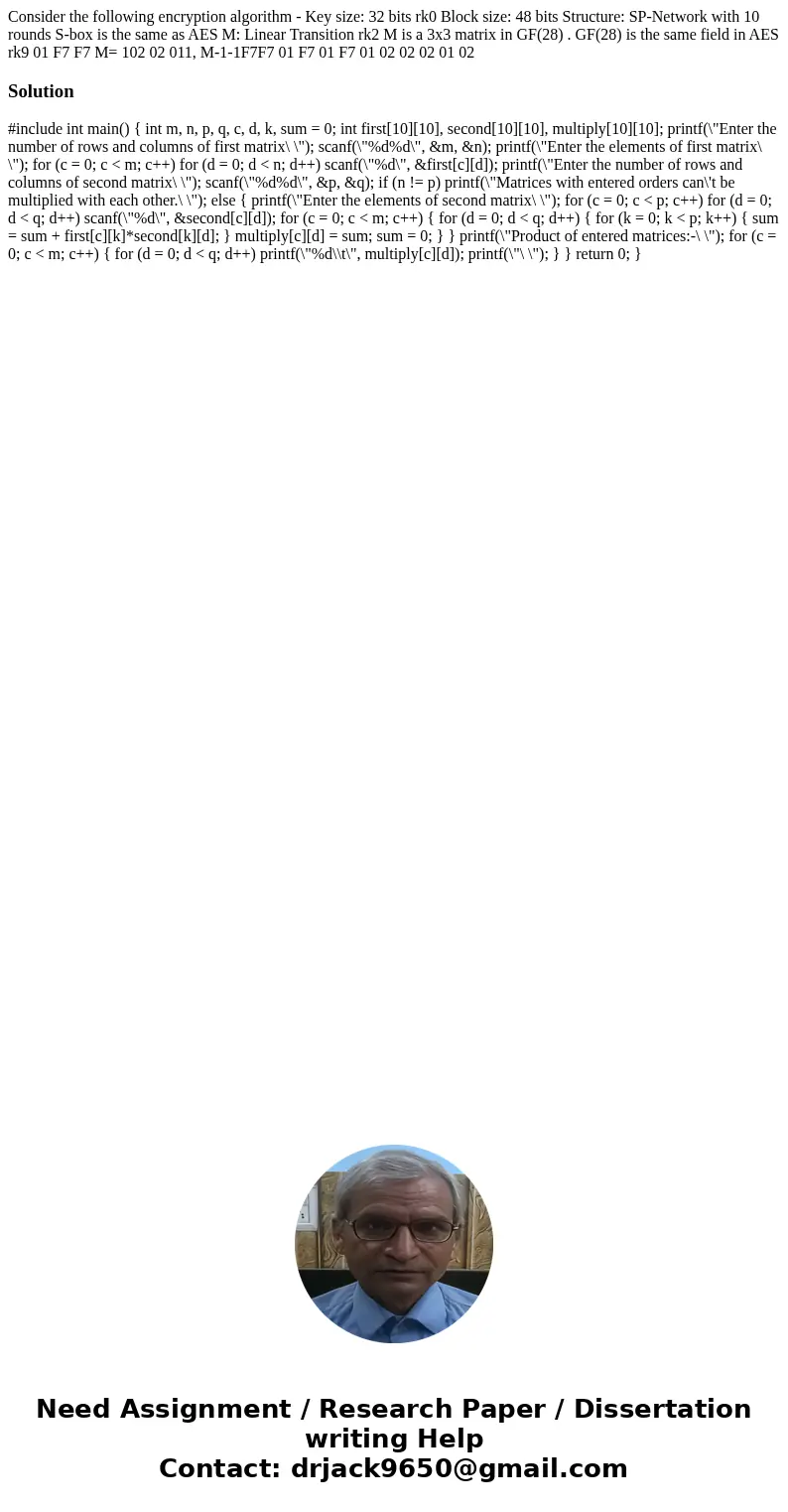Consider the following encryption algorithm Key size 32 bit
Consider the following encryption algorithm - Key size: 32 bits rk0 Block size: 48 bits Structure: SP-Network with 10 rounds S-box is the same as AES M: Linear Transition rk2 M is a 3x3 matrix in GF(28) . GF(28) is the same field in AES rk9 01 F7 F7 M= 102 02 011, M-1-1F7F7 01 F7 01 F7 01 02 02 02 01 02 int main() { int m, n, p, q, c, d, k, sum = 0; int first[10][10], second[10][10], multiply[10][10]; printf(\"Enter the number of rows and columns of first matrix\ \"); scanf(\"%d%d\", &m, &n); printf(\"Enter the elements of first matrix\ \"); for (c = 0; c < m; c++) for (d = 0; d < n; d++) scanf(\"%d\", &first[c][d]); printf(\"Enter the number of rows and columns of second matrix\ \"); scanf(\"%d%d\", &p, &q); if (n != p) printf(\"Matrices with entered orders can\'t be multiplied with each other.\ \"); else { printf(\"Enter the elements of second matrix\ \"); for (c = 0; c < p; c++) for (d = 0; d < q; d++) scanf(\"%d\", &second[c][d]); for (c = 0; c < m; c++) { for (d = 0; d < q; d++) { for (k = 0; k < p; k++) { sum = sum + first[c][k]*second[k][d]; } multiply[c][d] = sum; sum = 0; } } printf(\"Product of entered matrices:-\ \"); for (c = 0; c < m; c++) { for (d = 0; d < q; d++) printf(\"%d\\t\", multiply[c][d]); printf(\"\ \"); } } return 0; }

Solution
#include
 Homework Sourse
Homework Sourse